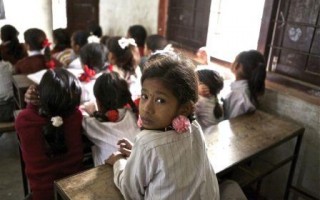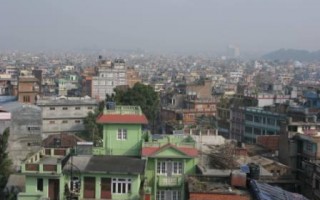Since there was no way I was going to even try to climb up Mount Everest, or even Base Camp, I decided to take the easy way out. Several airlines offer mountain flights that take you over Everest and other mountains in the Himalayas. In one and a half hours, you get up close to […]

Kids grow up quick in Nepal. They have to support their parents, raise younger siblings, and help out in the fields before and after school. When in school there’s often a lack of teachers and many of the children sit in the class unsupervised. Poverty and hardship breed creativity and resourcefulness, whether it’s a kite made […]

My perception of Kathmandu, the capital of Nepal was quite different than the reality. I had envisioned a metropolitan city, neatly maintaining the balance between the old and new, cobblestone pathways leading to the Hindu temples and Buddhist stupas where peace and fresh air fills into your lungs, streets of restaurants and bars where hippies, […]